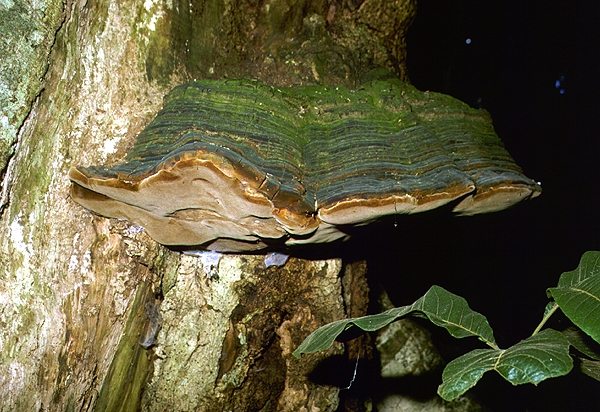
Phellinus sp.

Common name: None.
Description: Species of Phellinus form fruiting bodies that are extremely hard and woody; usually the structures are only detached from the tree or log on which it is growing with extreme difficulty (see note below). Often they resemble a very large horses hoof. Many species are perennial. The upper surface is ridged concentrically and is usually brown to black. Old specimens often have a green tint on the top of the bracket caused by the growth of algae, moss or lichens on the surface. The context is dark brown. The pore surface is always light or dark brown.
Species of Phellinus produce colourless spores that are usually less than 7 µm in diameter and which are white in mass.
Substratum: These fungi can be found on living or dead trees or fallen logs. The fruiting bodies may be solitary or there may be several growing together.
Distribution: Species of Phellinus are found in all eastern mainland States and Tasmania.
Notes: These bracket fungi are quite common in forests and woodlands. Their hardness is quite amazing and it makes them very difficult to collect for study. In England, one of the very early mycological pioneers, Carlton Rea, could sometimes be seen in woodlands collecting samples of Phellinus with a small hatchet. He used to enjoy telling the story of how he once was mistaken for an escapee from a local psychiatric hospital because of this activity.
